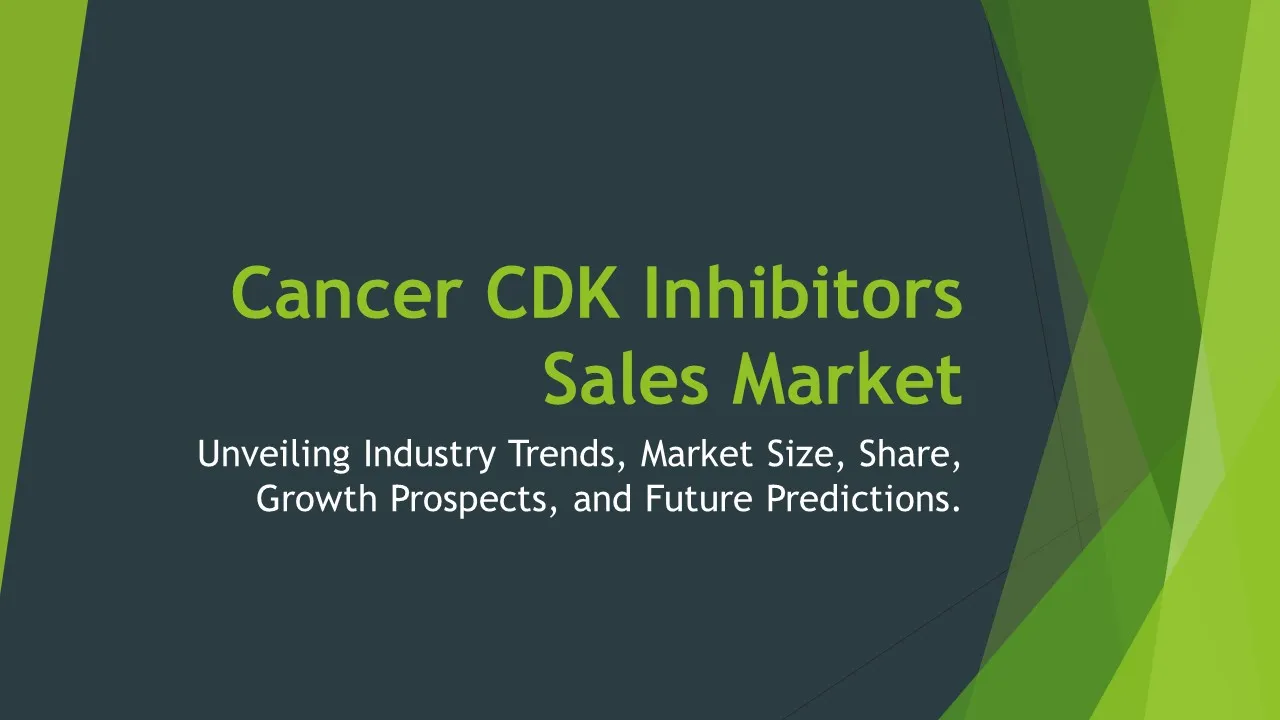Endocrine System Drug Sales
Endocrine System Drug Sales Market Segments - by Product Type (Thyroid Disorders Drugs, Diabetes Drugs, Growth Hormone Drugs, Adrenal Disorders Drugs, Pituitary Disorders Drugs), Application (Hospitals, Clinics, Retail Pharmacies, Online Pharmacies), Distribution Channel (Online Sales, Retail Sales), Ingredient Type (Levothyroxine, Insulin, Somatropin, Hydrocortisone, Desmopressin), and Region (North America, Europe, Asia Pacific, Latin America, Middle East & Africa) - Global Industry Analysis, Growth, Share, Size, Trends, and Forecast 2025-2035
- Report Preview
- Table Of Content
- Segments
- Methodology
Endocrine System Drug Sales Market Outlook
The global endocrine system drug sales market is projected to reach approximately USD 123 billion by 2035, with a compound annual growth rate (CAGR) of around 8.5% during the forecast period of 2025 to 2035. This robust growth can be attributed to the increasing prevalence of endocrine disorders such as diabetes and thyroid-related issues, alongside the escalating demand for effective treatment solutions. An aging global population, coupled with rising healthcare expenditures, also plays a pivotal role in driving market growth. Advances in pharmaceutical research and the introduction of innovative therapies further contribute to the market's upward trajectory. Together, these factors underscore the significant potential for expansion within the endocrine drugs sector, highlighting its vital importance in modern healthcare.
Growth Factor of the Market
The growth of the endocrine system drug sales market is primarily driven by the rising incidence of chronic endocrine disorders, including diabetes, thyroid dysfunction, and growth hormone deficiencies. As global lifestyles evolve, factors such as obesity, sedentary behavior, and poor dietary habits have become more prevalent, leading to an increase in the number of individuals diagnosed with diabetes and related metabolic issues. Furthermore, advancements in drug formulations and delivery mechanisms have significantly improved treatment efficacy, enhancing patient adherence to prescribed therapies. Regulatory approvals for new medications, as well as the expansion of generic drugs, provide healthcare professionals with a wider array of treatment options. Moreover, heightened patient awareness and education regarding endocrine health are encouraging individuals to seek timely medical interventions, collectively fostering a positive environment for market growth.
Key Highlights of the Market
- The global endocrine system drug sales market is expected to witness significant growth, driven by increasing incidences of diabetes and thyroid disorders.
- Innovative drug formulations and advanced delivery methods are set to enhance treatment adherence among patients.
- The rising geriatric population is a crucial factor contributing to market expansion due to the increased prevalence of endocrine disorders in older individuals.
- Regulatory approvals for novel therapeutic agents will continue to open new avenues in the market.
- Technological advancements in telemedicine and e-pharmacy are facilitating greater access to endocrine medications.
By Product Type
Thyroid Disorders Drugs:
Thyroid disorders drugs represent a significant segment within the endocrine system drug sales market, primarily due to the high prevalence of conditions such as hypothyroidism and hyperthyroidism. Levothyroxine, a synthetic form of the thyroid hormone thyroxine (T4), is widely prescribed for the management of hypothyroidism, making it one of the most commonly used medications within this category. The growing awareness of thyroid health and the importance of regular screenings have led to an increase in diagnosed cases, thus bolstering the demand for effective thyroid medications. Furthermore, advancements in drug formulations, such as extended-release options, are enhancing the therapeutic outcomes for patients, further supporting the market growth in this segment.
Diabetes Drugs:
Diabetes drugs form another critical segment of the endocrine system drug sales market, driven by the alarming rise in global diabetes prevalence. Insulin remains a cornerstone of diabetes management, with various types of insulin and oral hypoglycemic agents available to cater to diverse patient needs. The ongoing development of new classes of diabetes medications, such as GLP-1 receptor agonists and SGLT2 inhibitors, has transformed diabetes care, providing patients with more options to manage their condition effectively. The increasing awareness of diabetes management and prevention strategies, along with supportive government initiatives aimed at combating this epidemic, further enhance the market dynamics within this segment.
Growth Hormone Drugs:
Growth hormone drugs are essential for the treatment of growth hormone deficiencies, particularly in children and adolescents. Somatropin, a recombinant human growth hormone, is the primary product in this category and has shown significant efficacy in promoting growth in individuals with deficiencies. The expanding indications for growth hormone therapy, including treatment for Turner syndrome and Prader-Willi syndrome, have played a crucial role in driving market growth. Moreover, the increasing diagnosis rates and awareness surrounding growth disorders are expected to propel the demand for growth hormone drugs, making this a dynamic segment of the endocrine drug market.
Adrenal Disorders Drugs:
Adrenal disorders drugs are pivotal for the management of conditions such as Addison's disease and Cushing's syndrome. Hydrocortisone is one of the most widely prescribed medications in this category, serving as a replacement therapy for those with adrenal insufficiency. The growing recognition of adrenal disorders and their symptoms, along with advancements in diagnostic capabilities, have led to an increase in accurate diagnosis and treatment. The market is also witnessing a trend towards personalized medicine, where treatment plans are tailored to individual patient needs, thereby enhancing therapeutic outcomes and further solidifying the significance of adrenal disorder drugs in the market.
Pituitary Disorders Drugs:
Pituitary disorders drugs are essential for managing conditions arising from hormonal imbalances due to pituitary gland dysfunction. Desmopressin is a commonly used medication for treating diabetes insipidus and other related disorders. The growing focus on early diagnosis and treatment of hormonal imbalances is anticipated to drive the demand for pituitary disorder medications. As scientific research continues to shed light on the complexities of pituitary disorders, the introduction of new and more effective therapeutic options is likely to bolster this segment of the endocrine system drug sales market.
By Application
Hospitals:
Hospitals are a primary application segment for endocrine system drugs, as they are often the first point of contact for patients with endocrine disorders. In a hospital setting, healthcare professionals can provide comprehensive care, including diagnosis, treatment, and monitoring, which is critical for managing chronic conditions such as diabetes and thyroid disorders. The availability of advanced medical technology and multidisciplinary teams enhances the quality of care provided in hospitals, making them a conducive environment for the administration of endocrine therapies. Additionally, the rise in hospital admissions related to endocrine issues drives the demand for these medications, further propelling growth within this application segment.
Clinics:
Clinics play a significant role in the endocrine system drug sales market, particularly for routine management of chronic conditions. Outpatient clinics provide a platform for patients to receive ongoing care and medication management without the need for hospitalization. The convenience of accessing healthcare services at clinics, coupled with the increasing prevalence of endocrine disorders, encourages patients to seek timely treatment. Moreover, clinics often focus on preventive care and patient education, which is crucial for managing conditions such as diabetes effectively. This growing trend towards preventive health care is expected to drive the demand for endocrine drugs in the clinic setting.
Retail Pharmacies:
Retail pharmacies are a vital distribution channel for endocrine system drugs, providing patients with easy access to essential medications. The increasing prevalence of chronic endocrine disorders has led to an upsurge in the demand for prescription medications, which retail pharmacies are well-positioned to fulfill. With the rise of e-prescribing and digital health technologies, retail pharmacies are enhancing their services to improve patient convenience and medication adherence. Additionally, the presence of pharmacists to offer counseling and education regarding medication use further supports the retail pharmacy segment's importance in the endocrine drug sales market.
Online Pharmacies:
Online pharmacies have emerged as a growing application segment in the endocrine system drug market, primarily due to the convenience they offer to patients. The COVID-19 pandemic accelerated the shift towards digital healthcare solutions, prompting many patients to seek medications through online platforms. This trend is expected to continue as consumers appreciate the ease of ordering medications from the comfort of their homes. Online pharmacies often provide competitive pricing and a broader selection of products, making them an attractive option for many consumers. The incorporation of telehealth services alongside online pharmacies further enhances their value in managing endocrine disorders.
By Distribution Channel
Online Sales:
Online sales represent a significant distribution channel for endocrine system drugs, driven by the convenience and accessibility of e-commerce platforms. The increasing adoption of digital health solutions and the proliferation of online pharmacies have transformed the way patients obtain their medications. The ability to compare prices, find availability, and receive medications at home has become a key factor in consumer preference. Furthermore, advancements in technology have enabled secure online transactions and telehealth consultations, making it easier for patients to manage their endocrine disorders and adhere to prescribed treatments. As this trend continues, the online sales channel is expected to capture a larger share of the market.
Retail Sales:
Retail sales continue to be a primary distribution channel for endocrine drugs, providing patients with immediate access to their medications. Traditional retail pharmacies are often the first point of contact for patients, offering a familiar setting for prescription fulfillment. The presence of pharmacists who can provide counseling and answer questions plays a crucial role in patient support and adherence to treatment regimens. Moreover, the expansion of pharmacy chains and their efforts to integrate with healthcare providers to offer comprehensive services contribute to the sustained growth of retail sales in the endocrine system drug market.
By Ingredient Type
Levothyroxine:
Levothyroxine is a critical ingredient in the management of hypothyroidism and is one of the most widely prescribed medications in the endocrine system drug sales market. As a synthetic form of the thyroid hormone thyroxine (T4), levothyroxine helps restore normal hormone levels in patients with thyroid dysfunction. The growing recognition of the importance of thyroid health and the increasing number of diagnosed cases of hypothyroidism contribute to the robust demand for levothyroxine. Ongoing advancements in drug formulations, including the development of patient-friendly dosing options, are expected to further enhance the market potential for this key ingredient.
Insulin:
Insulin is a cornerstone of diabetes management and plays a pivotal role in treating both Type 1 and Type 2 diabetes. With the rising global prevalence of diabetes, insulin remains in high demand, further supported by the development of various formulations, including rapid-acting, long-acting, and combination insulins. The introduction of insulin delivery devices, such as pens and pumps, has improved patient adherence and convenience. Additionally, the increasing emphasis on personalized medicine is driving research into tailored insulin therapies, thereby solidifying insulin's position as a crucial ingredient in the endocrine system drug market.
Somatropin:
Somatropin, a recombinant human growth hormone, is essential for treating growth hormone deficiencies in children and adults. The market for somatropin is bolstered by the growing recognition of growth disorders and the importance of early intervention. Furthermore, somatropin has expanded indications, such as treatment for chronic kidney disease and Turner syndrome, driving its demand. The introduction of biosimilars has enhanced accessibility and affordability of growth hormone therapies, positioning somatropin as a vital ingredient in the endocrine drug sales landscape.
Hydrocortisone:
Hydrocortisone is a synthetic corticosteroid widely used in the treatment of adrenal insufficiency, particularly in patients with Addison's disease. As a critical ingredient for those requiring hormone replacement therapy, hydrocortisone remains a key player in the endocrine system drug market. The increasing awareness of adrenal disorders and their associated symptoms drives demand for hydrocortisone and related medications. Additionally, the focus on improving patient adherence through innovative formulations, such as extended-release options, enhances the therapeutic outcomes, solidifying hydrocortisone's significance in the market.
Desmopressin:
Desmopressin is a synthetic analog of vasopressin and is crucial for the management of diabetes insipidus and other conditions related to insufficient vasopressin production. Its role in promoting water reabsorption in the kidneys makes it a vital therapeutic option for patients with specific endocrine disorders. The increasing diagnosis rates of these conditions and the need for effective management strategies contribute to the growing demand for desmopressin. Ongoing research into the potential applications of desmopressin in other hormonal disorders may further expand its market presence as a key ingredient in the endocrine drug sales landscape.
By Region
The North American region holds a dominant position in the global endocrine system drug sales market, accounting for approximately 45% of the total market share. This can be attributed to the high prevalence of chronic endocrine disorders, advanced healthcare infrastructure, and significant investments in pharmaceutical research and development. The presence of major market players and a well-established regulatory framework further enhance the region's growth potential. The market is projected to witness a CAGR of around 9% during the forecast period, driven by the increasing demand for innovative therapies and a growing emphasis on preventive care.
In Europe, the endocrine system drug sales market is experiencing substantial growth, currently representing about 30% of the global market share. Factors such as rising healthcare expenditures, increasing awareness of endocrine disorders, and the growing aging population contribute to this growth trend. The region is witnessing an increase in government initiatives aiming to improve healthcare access and promote early diagnosis, which in turn drives the demand for endocrine medications. Additionally, the emergence of biosimilars and generic drugs is providing patients with more affordable treatment options, further fueling market expansion in Europe. The Asia Pacific region is also on an upward trajectory, with expectations for rapid growth due to rising disposable incomes, improved healthcare infrastructure, and a growing focus on healthcare accessibility in emerging economies.
Opportunities
The endocrine system drug sales market presents numerous opportunities for growth, particularly in the development and commercialization of innovative therapies. As the incidence of endocrine disorders continues to rise globally, there is an increasing need for effective treatment options that cater to diverse patient populations. Pharmaceutical companies are focusing on research and development to create novel drugs that address unmet medical needs, including personalized therapies that are tailored to individual patient profiles. This trend towards personalized medicine not only enhances treatment efficacy but also strengthens patient adherence to prescribed regimens. Furthermore, collaborations between pharmaceutical companies and healthcare providers can foster better patient management strategies, leading to improved health outcomes and increased market share for participating companies.
Another significant opportunity lies in the expansion of telemedicine and digital health solutions, which have gained traction in recent years. As patients increasingly turn to virtual healthcare options for managing chronic conditions, pharmaceutical companies can leverage telehealth platforms to reach a wider audience and improve medication adherence. By integrating educational resources, remote monitoring tools, and medication management services into their offerings, companies can enhance the patient experience and foster brand loyalty. Additionally, the rise of online pharmacies presents an avenue for increased accessibility to endocrine drugs, making it easier for patients to obtain their medications and manage their health effectively. Together, these opportunities contribute to a dynamic and evolving landscape for the endocrine system drug sales market.
Threats
Despite the promising growth prospects, the endocrine system drug sales market faces potential threats that could impede its progress. One of the primary concerns is the rising competition from biosimilars and generic drugs, which are increasingly entering the market and putting pressure on branded pharmaceuticals. As patients seek more affordable treatment options, the prevalence of lower-cost alternatives may lead to a decline in sales for established brands. This scenario necessitates that pharmaceutical companies differentiate their products and focus on innovation to maintain market share. Moreover, stringent regulatory frameworks and evolving healthcare policies may impact product development timelines and approval processes, thereby affecting market dynamics.
Additionally, the ongoing challenge of drug pricing and affordability remains a significant barrier for patients. Many individuals with chronic endocrine disorders may struggle to afford their medications, leading to suboptimal treatment adherence and negative health outcomes. Pharmaceutical companies must navigate these challenges by adopting pricing strategies that strike a balance between profitability and patient accessibility. The increasing prevalence of counterfeit drugs in the market also poses a threat to patient safety and brand reputation, necessitating robust measures to ensure product authenticity and safeguard consumer trust. Addressing these threats is crucial for sustaining growth in the endocrine system drug sales market.
Competitor Outlook
- AbbVie Inc.
- Boehringer Ingelheim GmbH
- Merck & Co., Inc.
- Sanofi S.A.
- Pfizer Inc.
- Amgen Inc.
- Teva Pharmaceutical Industries Ltd.
- Eli Lilly and Company
- Novartis AG
- GlaxoSmithKline plc
- Roche Holding AG
- Sumitomo Dainippon Pharma Co., Ltd.
- Hikma Pharmaceuticals PLC
- Ferring Pharmaceuticals Inc.
- Actelion Pharmaceuticals Ltd.
The competitive landscape of the endocrine system drug sales market is characterized by the presence of several key players, each striving to maintain a competitive edge through innovation and strategic partnerships. Major pharmaceutical companies are increasingly investing in research and development to introduce novel therapies that address the unmet needs of patients with endocrine disorders. Collaborations between industry stakeholders, healthcare providers, and research institutions serve to enhance product development efforts and improve patient access to effective treatments. Additionally, the focus on patient-centric approaches highlights the importance of understanding patient needs and preferences, shaping the development of targeted therapies that deliver optimal outcomes.
As market dynamics evolve, companies are exploring opportunities to diversify their portfolios and expand their geographic presence. For example, firms are investing in emerging markets where the prevalence of endocrine disorders is rising, thereby tapping into new patient populations. The strategic acquisition of smaller biotech firms with innovative drug pipelines is also becoming a common trend, enabling larger pharmaceutical companies to bolster their product offerings and enhance their competitive positioning. Notably, companies that prioritize sustainability and corporate social responsibility are likely to resonate better with consumers, further solidifying their market presence.
Among the notable players in the endocrine system drug sales market, AbbVie Inc. stands out for its robust portfolio of endocrinology treatments, including notable products for diabetes and growth hormone deficiencies. The company's commitment to research and development has enabled it to maintain a leadership position in the market. Similarly, Eli Lilly and Company has established itself as a major player in diabetes care, offering a wide range of insulin products and innovative therapies that cater to various patient needs. Their focus on patient education and support programs is enhancing treatment adherence and improving health outcomes.
1 Appendix
- 1.1 List of Tables
- 1.2 List of Figures
2 Introduction
- 2.1 Market Definition
- 2.2 Scope of the Report
- 2.3 Study Assumptions
- 2.4 Base Currency & Forecast Periods
3 Market Dynamics
- 3.1 Market Growth Factors
- 3.2 Economic & Global Events
- 3.3 Innovation Trends
- 3.4 Supply Chain Analysis
4 Consumer Behavior
- 4.1 Market Trends
- 4.2 Pricing Analysis
- 4.3 Buyer Insights
5 Key Player Profiles
- 5.1 Amgen Inc.
- 5.1.1 Business Overview
- 5.1.2 Products & Services
- 5.1.3 Financials
- 5.1.4 Recent Developments
- 5.1.5 SWOT Analysis
- 5.2 AbbVie Inc.
- 5.2.1 Business Overview
- 5.2.2 Products & Services
- 5.2.3 Financials
- 5.2.4 Recent Developments
- 5.2.5 SWOT Analysis
- 5.3 Novartis AG
- 5.3.1 Business Overview
- 5.3.2 Products & Services
- 5.3.3 Financials
- 5.3.4 Recent Developments
- 5.3.5 SWOT Analysis
- 5.4 Pfizer Inc.
- 5.4.1 Business Overview
- 5.4.2 Products & Services
- 5.4.3 Financials
- 5.4.4 Recent Developments
- 5.4.5 SWOT Analysis
- 5.5 Sanofi S.A.
- 5.5.1 Business Overview
- 5.5.2 Products & Services
- 5.5.3 Financials
- 5.5.4 Recent Developments
- 5.5.5 SWOT Analysis
- 5.6 Roche Holding AG
- 5.6.1 Business Overview
- 5.6.2 Products & Services
- 5.6.3 Financials
- 5.6.4 Recent Developments
- 5.6.5 SWOT Analysis
- 5.7 Merck & Co., Inc.
- 5.7.1 Business Overview
- 5.7.2 Products & Services
- 5.7.3 Financials
- 5.7.4 Recent Developments
- 5.7.5 SWOT Analysis
- 5.8 GlaxoSmithKline plc
- 5.8.1 Business Overview
- 5.8.2 Products & Services
- 5.8.3 Financials
- 5.8.4 Recent Developments
- 5.8.5 SWOT Analysis
- 5.9 Eli Lilly and Company
- 5.9.1 Business Overview
- 5.9.2 Products & Services
- 5.9.3 Financials
- 5.9.4 Recent Developments
- 5.9.5 SWOT Analysis
- 5.10 Boehringer Ingelheim GmbH
- 5.10.1 Business Overview
- 5.10.2 Products & Services
- 5.10.3 Financials
- 5.10.4 Recent Developments
- 5.10.5 SWOT Analysis
- 5.11 Hikma Pharmaceuticals PLC
- 5.11.1 Business Overview
- 5.11.2 Products & Services
- 5.11.3 Financials
- 5.11.4 Recent Developments
- 5.11.5 SWOT Analysis
- 5.12 Ferring Pharmaceuticals Inc.
- 5.12.1 Business Overview
- 5.12.2 Products & Services
- 5.12.3 Financials
- 5.12.4 Recent Developments
- 5.12.5 SWOT Analysis
- 5.13 Actelion Pharmaceuticals Ltd.
- 5.13.1 Business Overview
- 5.13.2 Products & Services
- 5.13.3 Financials
- 5.13.4 Recent Developments
- 5.13.5 SWOT Analysis
- 5.14 Sumitomo Dainippon Pharma Co., Ltd.
- 5.14.1 Business Overview
- 5.14.2 Products & Services
- 5.14.3 Financials
- 5.14.4 Recent Developments
- 5.14.5 SWOT Analysis
- 5.15 Teva Pharmaceutical Industries Ltd.
- 5.15.1 Business Overview
- 5.15.2 Products & Services
- 5.15.3 Financials
- 5.15.4 Recent Developments
- 5.15.5 SWOT Analysis
- 5.1 Amgen Inc.
6 Market Segmentation
- 6.1 Endocrine System Drug Sales Market, By Application
- 6.1.1 Hospitals
- 6.1.2 Clinics
- 6.1.3 Retail Pharmacies
- 6.1.4 Online Pharmacies
- 6.2 Endocrine System Drug Sales Market, By Product Type
- 6.2.1 Thyroid Disorders Drugs
- 6.2.2 Diabetes Drugs
- 6.2.3 Growth Hormone Drugs
- 6.2.4 Adrenal Disorders Drugs
- 6.2.5 Pituitary Disorders Drugs
- 6.3 Endocrine System Drug Sales Market, By Ingredient Type
- 6.3.1 Levothyroxine
- 6.3.2 Insulin
- 6.3.3 Somatropin
- 6.3.4 Hydrocortisone
- 6.3.5 Desmopressin
- 6.4 Endocrine System Drug Sales Market, By Distribution Channel
- 6.4.1 Online Sales
- 6.4.2 Retail Sales
- 6.1 Endocrine System Drug Sales Market, By Application
7 Competitive Analysis
- 7.1 Key Player Comparison
- 7.2 Market Share Analysis
- 7.3 Investment Trends
- 7.4 SWOT Analysis
8 Research Methodology
- 8.1 Analysis Design
- 8.2 Research Phases
- 8.3 Study Timeline
9 Future Market Outlook
- 9.1 Growth Forecast
- 9.2 Market Evolution
10 Geographical Overview
- 10.1 Europe - Market Analysis
- 10.1.1 By Country
- 10.1.1.1 UK
- 10.1.1.2 France
- 10.1.1.3 Germany
- 10.1.1.4 Spain
- 10.1.1.5 Italy
- 10.1.1 By Country
- 10.2 Asia Pacific - Market Analysis
- 10.2.1 By Country
- 10.2.1.1 India
- 10.2.1.2 China
- 10.2.1.3 Japan
- 10.2.1.4 South Korea
- 10.2.1 By Country
- 10.3 Latin America - Market Analysis
- 10.3.1 By Country
- 10.3.1.1 Brazil
- 10.3.1.2 Argentina
- 10.3.1.3 Mexico
- 10.3.1 By Country
- 10.4 North America - Market Analysis
- 10.4.1 By Country
- 10.4.1.1 USA
- 10.4.1.2 Canada
- 10.4.1 By Country
- 10.5 Middle East & Africa - Market Analysis
- 10.5.1 By Country
- 10.5.1.1 Middle East
- 10.5.1.2 Africa
- 10.5.1 By Country
- 10.6 Endocrine System Drug Sales Market by Region
- 10.1 Europe - Market Analysis
11 Global Economic Factors
- 11.1 Inflation Impact
- 11.2 Trade Policies
12 Technology & Innovation
- 12.1 Emerging Technologies
- 12.2 AI & Digital Trends
- 12.3 Patent Research
13 Investment & Market Growth
- 13.1 Funding Trends
- 13.2 Future Market Projections
14 Market Overview & Key Insights
- 14.1 Executive Summary
- 14.2 Key Trends
- 14.3 Market Challenges
- 14.4 Regulatory Landscape
Segments Analyzed in the Report
The global Endocrine System Drug Sales market is categorized based on
By Product Type
- Thyroid Disorders Drugs
- Diabetes Drugs
- Growth Hormone Drugs
- Adrenal Disorders Drugs
- Pituitary Disorders Drugs
By Application
- Hospitals
- Clinics
- Retail Pharmacies
- Online Pharmacies
By Distribution Channel
- Online Sales
- Retail Sales
By Ingredient Type
- Levothyroxine
- Insulin
- Somatropin
- Hydrocortisone
- Desmopressin
By Region
- North America
- Europe
- Asia Pacific
- Latin America
- Middle East & Africa
Key Players
- AbbVie Inc.
- Boehringer Ingelheim GmbH
- Merck & Co., Inc.
- Sanofi S.A.
- Pfizer Inc.
- Amgen Inc.
- Teva Pharmaceutical Industries Ltd.
- Eli Lilly and Company
- Novartis AG
- GlaxoSmithKline plc
- Roche Holding AG
- Sumitomo Dainippon Pharma Co., Ltd.
- Hikma Pharmaceuticals PLC
- Ferring Pharmaceuticals Inc.
- Actelion Pharmaceuticals Ltd.
- Publish Date : Jan 21 ,2025
- Report ID : PH-66869
- No. Of Pages : 100
- Format : |
- Ratings : 4.5 (110 Reviews)









